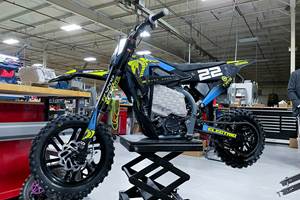Impressions of Rapid 2016
Software and synergy were two of the noticeable themes of the show. More noticeable still was the emphasis on industrial production.
SME’s Rapid event, which began as a small conference more than 25 years ago, has evolved into a full-fledged trade show and the best-known 3D printing event in North America. Rapid 2016 was held last week in Orlando, Florida. The show this year was the largest so far in terms of exhibits, with 247 exhibitors filling 44,700 square feet of space. Relative to the show last year, those numbers are up 30 and 40 percent, respectively, and they represent a dramatic improvement from just 3 years ago when Rapid occupied only 15,700 square feet. I have not yet seen figures on attendance, but traffic was brisk enough that I expect those numbers to be strong as well.
Some brief impressions of the show:
HP Promotes AM
The most visible exhibitor this year was HP, an assertion I doubt anyone attending the show would dispute. HP’s two sizeable booths gave it a large footprint on the show floor, and the company was also given a prominent role within the first day’s keynote presentation. HP used this year’s Rapid as the venue to launch its production-ready 3D printer.
Buzz for Unusual Machines
The HP launch was one of three product introductions that I heard attendees talking about the most. The other exhibits garnering attention included (A) a machine from EnvisionTec capable of building thermoplastic composite parts by layering and bonding laminated composite sheets, and (B) a machine from XJet that builds metal parts by applying the metal in liquid form from inkjet nozzles.
Come Together
In the additive space, a variety of prominent companies have grown through acquisition. Now, the synergies resulting from those acquisitions have begun to be seen. At Rapid this year, sister companies that might have seemed awkward together when they were newly merged began to look and act like components of a coherent system, and began to articulate the promise that further integration will bring. (I expect more news on this to come.)
Software is a Significant Piece
I’ve heard it said that 3D printing is more than just “control P.” Certainly that’s true. However, software interfaces engineered for ease of use are simplifying the processes of orienting and arraying parts for an additive build. Two examples I saw at the show were Renishaw’s QuantAM and Stratasys’s GrabCAD interface, both of which make “control P” seem not far off.
A Manufacturing Show
For me, the most significant observation was this: 2016 was the year in which Rapid became a manufacturing show. In the past, I have had to cherry-pick my way through this show to find the content relevant to a manufacturing audience. That is because 3D printing for art, architecture, fashion and filmmaking were all part of the show as well. This year, those elements were secondary. Industrial production via additive manufacturing is what the major exhibitors wanted to emphasize, and it is what the show this year was all about. And given the promise of additive processes for industrial production, I expect this to be a lasting change.
For more I what I saw and noted at Rapid this year, see the tweets from May 17-19 in my Twitter feed.
Related Content
Additive Manufacturing Is Subtractive, Too: How CNC Machining Integrates With AM (Includes Video)
For Keselowski Advanced Manufacturing, succeeding with laser powder bed fusion as a production process means developing a machine shop that is responsive to, and moves at the pacing of, metal 3D printing.
Read MoreNew Electric Dirt Bike Is Designed for Molding, but Produced Through 3D Printing (Includes Video)
Cobra Moto’s new all-electric youth motocross bike could not wait for mold tooling. Parts have been designed so they can be molded eventually, but to get the bike to market, the production method now is additive manufacturing.
Read MoreLarge-Format “Cold” 3D Printing With Polypropylene and Polyethylene
Israeli startup Largix has developed a production solution that can 3D print PP and PE without melting them. Its first test? Custom tanks for chemical storage.
Read MoreDMG MORI: Build Plate “Pucks” Cut Postprocessing Time by 80%
For spinal implants and other small 3D printed parts made through laser powder bed fusion, separate clampable units resting within the build plate provide for easy transfer to a CNC lathe.
Read MoreRead Next
4 Ways the Education and Training Challenge Is Different for Additive Manufacturing
The advance of additive manufacturing means we need more professionals educated in AM technology.
Read MoreHybrid Additive Manufacturing Machine Tools Continue to Make Gains (Includes Video)
The hybrid machine tool is an idea that continues to advance. Two important developments of recent years expand the possibilities for this platform.
Read More3D Printing Brings Sustainability, Accessibility to Glass Manufacturing
Australian startup Maple Glass Printing has developed a process for extruding glass into artwork, lab implements and architectural elements. Along the way, the company has also found more efficient ways of recycling this material.
Read More
.jpg;width=70;height=70;mode=crop)









.png;maxWidth=300;quality=90)












